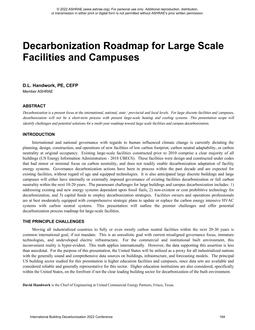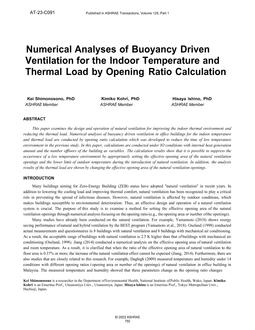
HA-2449 (RP 194) — The Role of Environmental Antecedents on Subsequent Thermal Comfort
Thermal comfort is defined as that condition ‘of ,mind that expresses satisfaction,with the thermal environmen~ [1]. Similarly, a thermal sensation is defined as a conscious experience resulting from exposure to a class of variables making up the thermal environment [2]. In both of these definitions, the thermal environment includes the dry-bulb temperat~re, air velocity, water vapor pressure, mean radiant temperature; whelU man is added to the environment” his physical activity and the clothing he is wearing must also be specified. Even though these factors have been rigidly controlled in most of the recent comfort research, criticism is often registered against the more or less static conditions empioyed in these studies.
In some of the experiments the subjects are dressed in a uniform clothing ensemble and enter an environmental chamber where the thermal conditions are systematically varied; they sit there for 3 hr and register their thermal sensations on rating scales or ballots. In other studies, the subjects increase or decrease the dry bulb temperature until they feel comfortable. But regardless of the procedure, neither of these designs examines the environmental antecedents or events and conditions that occur prior to the exposure. Moreover, from what we know about the subtleties of the affective thermal response, it is not at all unlikely that one or more of these factors may affect the subsequent responses of the subjects while in the environmental chamber. Because of this the present study was undertaken to examine the effects of environmental antecedents on comfort. In the first study the effects of earlier exposure to different temperatures were studied; in the second study the effects of the room decor on comfort were investigated.
Product Details
- Published:
- 1977
- Number of Pages:
- 9
- File Size:
- 1 file , 690 KB
- Product Code(s):
- D-HA-2449
- Note:
- This product is unavailable in Russia, Belarus


